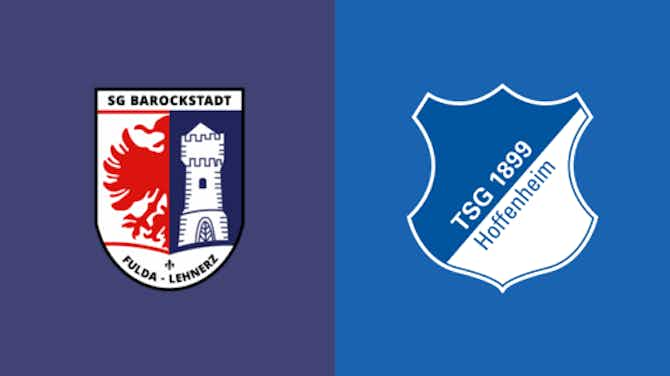FCBinside.com
·2 July 2022
Are FC Bayern Resolving the Heinous Shirt Number Crime?

FCBinside.com
·2 July 2022

Shirt numbers are a huge part of football, whether you like it or not. It influences many fans worldwide, across every country and every household. Some people become aggravated or disappointed if their favourite players take the wrong shirt number. And while FC Bayern seemed to be resolving their previous wrongdoings on this front, it seems like Die Roten have just taken one step forward and three steps back
A brief history about shirt numbers, teams began wearing numbers 1 to 11 in New South Wales, Australia, in 1911 by two Sydney teams. It became mandatory a year later, and was introduced in 1914 for English teams, and 1924 for North American sides. As teams first began playing in 2-3-5 formations, the numbers evolved into the positions known today based on which region a person grew up in. For example, the 6 position is seen as the central defensive midfielder in most of Europe, but is a central defender in England, and a left-back in South America. Similarly, the 4 is a central defender in Europe and South America, but seen as the defensive midfielder in England. *insert facepalm here*
FC Bayern players are known for their somewhat poor shirt number selections, whether by choice or by luck. Similarly, Germany is usually on the disappointing side of shirt numbering order, with some awful selections in recent years
Starting on club level, changes in the past few season included Joshua Kimmich from 32 to 6, Leon Goretzka knocking off the 18 for the classic box-to-box 8, and Kingsley Coman taking 11, down from 29 on the wing, and Serge Gnabry calling 7 for the other flank, from 22 initially. The quartet’s changes saw hope for the club’s reputation, still known for awkward numbers, such as 25 for Thomas Müller, 27 with David Alaba, Toni Kroos with 39, Bastian Schweinsteiger’s 31, and 21 for former captain Phillip Lahm. The initial outlook, including Holger Badstuber’s 28, was that youth graduates into the first team would continue with their number for their career. This was also the case for Phillip Lahm’s initial 29, before he wore 21 on loan to Stuttgart and couldn’t reclaim his number from backup goalkeeper Bernd Dreher upon his return, and Mats Hummels, who started with 32 before going to Borussia Dortmund on loan
Although the new changes were welcomed by fans and traditionalists, this transfer window has already seen some disappointing results. The 17, 38, and 40 numbers by new trio Sadio Mané, Ryan Gravenberch, and Noussair Mazroui, are a far cry from the 1 to 11 squad fans were hoping to see. The 2021/22 season was the first in the 2000’s to have all 1 to 11 numbers filled, and hopes were high there would be a potential starting XI with just these numbers. It never came, and the closest was 8 of these in the team sheet, the exceptions being Lucas Hernández, Thomas Müller, and Alphonso Davies for the match in particular
Likewise on a national level, Germany’s traditional neighbours The Netherlands remain the only team ever to play a FIFA World Cup final with 1 to 11 numbers in 2010, and began every qualifying match until late 2019 with the starting XI wearing these digits. Miroslav Klose, the record Deutsche fußballnationalmannschaft goalscorer with 71 goals, wore 11, with Gerd Müller, Thomas Müller, and Michael Ballack all taking 13 as starting players, and Mario Gómez donning 23 as a central striker. Joshua Kimmich upgraded from 21 then 18 to 6, as did Goretzka from 14 to 18 to 8, and Serge Gnabry from 20 to 10. However, in light of these, in the same vein as FC Bayern, some more fiddling around is required to realise the traditionalist ambition
At FC Bayern, Benjamin Pavard chose 5 for its history as a central defender’s number, the preferred position he wants to play in. Being shunted to right-back, Dayot Upamecano took 2 as the last remaining number between 1 and 11 upon his arrival. In the national team, Timo Werner takes 9 when Marco Reus is in the squad with his 11, the only number he’s ever worn in his senior club career, while Kai Havertz takes 7 as the 29 he usually sticks with isn’t allowed on a national level
It seems the same pattern across both club and country is more about poor personal preference in the beginning, and reluctance to change as time progresses. Currently, Kai Havertz wears 29 at Chelsea, but Serge Gnabry’s 7 for country. Serge Gnabry wears Leroy Sané’s club 10 for country, pushing Sané himself to his old 19 at Manchester City. Rotating these three players would bring in an ideal scenario for traditionalists to wear the same numbers for club and country. Similarly, Jack Grealish wears 10 at club level and 7 for country, with club teammate Raheem Sterling pulling rank and calling 10 for England, whilst wearing 7 at Grealish’s club, Manchester City. The most famous example would be Xavi and Iniesta at Barcelona and Spain, wearing 6 and 8 respectively for club and swapping in the national setup
FC Bayern and Germany are not the only club and country to have poor shirt number decisions, but they are more pronounced than most. Jamal Musiala and Josip Stanisic are just two players to not move down numbers after earning first-team squad roles, following in the footsteps of the ever-infuriating 66 worn by Trent Alexander-Arnold at Liverpool. Although high shirt numbers are not satisfying and seen in many eyes as a heinous crime, it looks as though players will continue creating their own legacy through questionable decisions and undeterring commitment


Live





























































